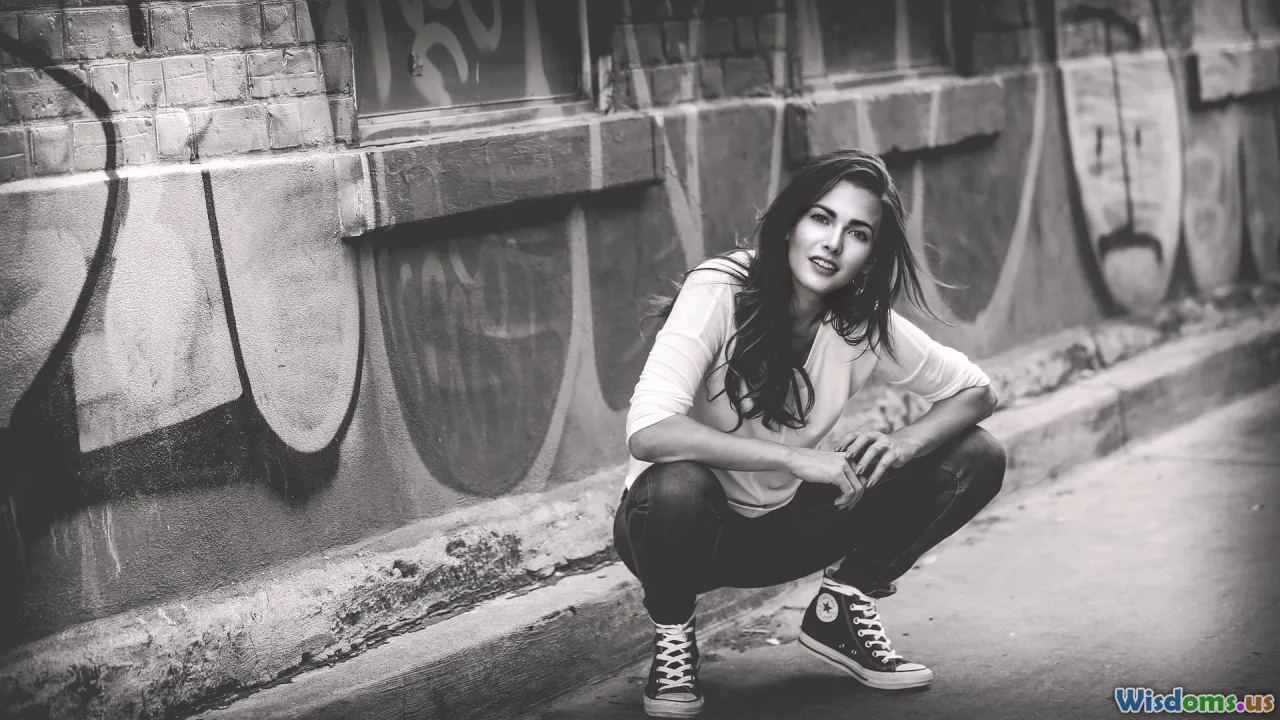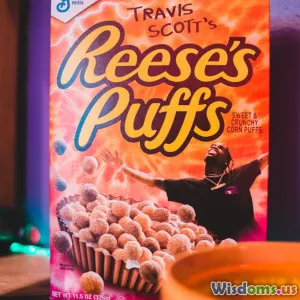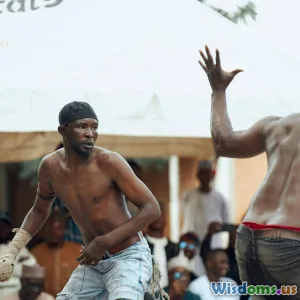
The Rise of Sustainable Fashion in Hip Hop Culture
11 min read Discover how sustainable fashion is transforming hip hop culture through eco-friendly styles and conscious choices by artists and brands. (0 Reviews)
The Rise of Sustainable Fashion in Hip Hop Culture
Hip hop, as a cultural powerhouse, has long shaped fashion trends worldwide. Its vibrant fusion of music, art, and lifestyle has created some of the most influential style movements, from bold streetwear to luxury designer collaborations. However, the spotlight is shifting towards something even more meaningful: sustainability. As consumers and creators become increasingly conscious about environmental impact and ethical production, hip hop is embracing sustainable fashion, blending cultural roots with green innovation. This article explores this powerful convergence—how sustainable fashion is rising within hip hop culture, why it matters, and the real-world figures and brands pioneering this game-changing shift.
Hip Hop’s Fashion Evolution: From Statement to Sustainability
Hip hop emerged in the 1970s as an artistic and expressive outlet in New York City’s marginalized communities. The genre not only revolutionized music but also launched unique fashion aesthetics. Early hip hop fashion celebrated individuality and cultural heritage through items like Kangol hats, gold chains, Adidas sneakers, and tracksuits. Over time, the nexus between hip hop and high-fashion brands such as Versace, Gucci, and Louis Vuitton intensified, embedding a luxury appeal.
Yet, for decades, this dazzling style spotlight often sidestepped important conversations on environmental impact. Fast fashion and resource-intensive manufacturing fueled many street-style trends, contradicting hip hop’s social awareness ethos. Recently, however, artists and designers within hip hop are reshaping narratives—to champion eco-conscious materials, ethical labor, and closed-loop production, making sustainability a new kind of statement.
The Cultural Imperative for Sustainability
Hip hop has always been about resistance and transformation—expressing owned identities while challenging systemic inequality. Today’s generation resonates with global issues like climate change and social justice. According to a 2020 report by First Apparel News, roughly 78% of millennial hip hop fans reported being more inclined to support brands with sustainable practices. This cultural alignment creates fertile ground for sustainable fashion to thrive.
From conscious consumers to creative disruptors, green fashion is becoming a critical part of hip hop's expression and activism.
How Hip Hop Artists Are Leading Sustainable Fashion
Artists wield immense influence over fashion trends; they set benchmarks that ripples through fan communities and streetwear enthusiasts worldwide. Increasingly, notable hip hop artists are incorporating sustainability into their personal brands and collaborations.
Jaden Smith: Championing Eco-Friendly Menswear
Jaden Smith, son of Will Smith, is one of hip hop’s vocal advocates of sustainable apparel. His clothing line, MSFTSrep, integrates recycled materials and eco-conscious processes. Jaden has publicly highlighted the importance of ethical manufacturing practices, emphasizing how fashion can drive planetary healing.
In 2019, Jaden partnered with H&M to create a sustainable menswear capsule that featured organic cotton, recycled polyester, and eco-friendly dyes. This collaboration showed major retailers the commercial viability of sustainability when powered by hip hop star appeal.
Pharrell Williams: From Music Icon to Sustainability Entrepreneur
Pharrell Williams transcends music charts as an innovator in sustainable fashion. His brand Billionaire Boys Club integrates recycled materials, organic fabrics, and promotes clothing longevity to offset waste. His work with Adidas on the Hu line pushes limits with primegreen and primeblue materials—high-performance recycled fabrics used in limited-edition sneakers.
Pharrell articulates sustainability’s cultural significance, stating: “Fashion and music intersect, and through that intersection, we have an opportunity to make impactful change.”
Cardi B: Advocating Ethical Luxury
Cardi B has publicly championed sustainability by supporting designers who focus on ethical supply chains and by urging fans toward mindful consumption. Featuring in campaigns that highlight eco-friendly brands, she injects fresh energy into sustainability dialogues in traditionally luxury-dominated spaces, connecting blue-collar roots with green futures.
While these artists influence trends, other musicians even integrate sustainability into their lyricism, reinforcing awareness across diverse audiences.
Brand Collaborations Driving Sustainable Streetwear
The demand for eco-friendly fashion within hip hop has forced retailers and manufacturers to rethink their production and marketing strategies.
Adidas x Parley for the Oceans: Cutting Ocean Pollution
Adidas’ collaboration with Parley for the Oceans, a nonprofit addressing marine plastic pollution, is a pioneering example. The partnership produces sneakers and apparel made from recycled ocean plastic, gaining popularity among hip hop fans and artists alike.
Artists like Kanye West have been spotted wearing Adidas Parley sneakers, increasing visibility for sustainable footwear. The initiative reportedly removed over 6 million plastic bottles from oceans as of 2023, showcasing tangible environmental impact combined with cultural relevance.
Pangaia: Sustainable Materials & High-Tech Innovation
Pangaia, a science-based brand popular in street-style and hip hop circles, uses bio-based textiles, recycled fibers, and employs natural dyes. With a minimalist aesthetic favored by artists such as ASAP Rocky and Travis Scott, Pangaia’s message echoes: fashion can be cool and sustainable simultaneously.
Their C-Fibre fabric uses an innovative cellulose material engineered for durability without environmental harm, proving green tech is advancing rapidly in this scene.
New Collaborations on the Horizon
A growing number of hip hop artists are launching or planning sustainable streetwear lines, including collaborations with eco-conscious manufacturers and innovative startups.
Fashion week circuits in New York and Paris have witnessed collections reflecting hip hop’s sustainable trajectory. It signals the industry’s broader acceptance and the genre’s influence beyond music.
The Role of Social Media and Community Engagement
Social media platforms serve as melting pots where sustainable fashion ideas in hip hop culture spread rapidly. Platforms like Instagram, TikTok, and Twitter enable artists to inspire fans with behind-the-scenes looks at production ethics, upcycled fashion challenges, and secondhand style inspirations.
Engagement campaigns such as #EcoHipHop or #GreenStreetwear encourage fans to share eco-friendly outfit ideas and promote environmental consciousness organically.
Furthermore, grassroots movements within urban communities emphasize clothing swaps, repair camps, and upcycling workshops inspired by hip hop’s recycling ethos—creating closed-loop consumption models influenced by culture.
Environmental Impact and Challenges Ahead
While the rise of sustainable fashion in hip hop shows promising momentum, challenges remain:
-
Affordability and Accessibility: Sustainable fashion often comes at a higher price point, complicating access in economically marginalized communities central to hip hop’s roots.
-
Greenwashing Risks: As sustainability trends grow, some brands capitalize on superficial eco-claims without meaningful impact. Authenticity is critical for hip hop audiences wary of commercial exploitation.
-
Scale of Change: The fast nature of fashion cycles in hip hop, coupled with limited consumer awareness, demands ongoing education and systemic industry shifts.
Despite these hurdles, the movement’s cultural authenticity paired with actionable innovations can shape a more equitable and environmentally responsible hip hop fashion future.
Conclusion: Hip Hop’s Sustainable Style Revolution
The rise of sustainable fashion in hip hop culture is more than a trend—it’s an authentic evolution reflecting global awareness, social responsibility, and creative innovation. Through pioneering artists like Jaden Smith, Pharrell Williams, and Cardi B, alongside visionary brands and dynamic communities engaging in green initiatives, hip hop is steering fashion towards a more conscious horizon.
This fusion of culture and sustainability offers a blueprint for fashion's future where self-expression flourishes alongside care for the planet and its people. As hip hop’s influence continues expanding, its embrace of eco-conscious style not only enhances artistic identity but also inspires millions to consider the environmental footprint of their wardrobes.
Whether you’re a music fan, a fashion aficionado, or an environmental advocate, hip hop’s embrace of sustainable fashion invites us all to participate in redefining how culture and care intertwine—one outfit at a time.
References
- First Apparel News (2020). Millennial Hip Hop Fans and Sustainable Brands Study
- Adidas x Parley (2023). Ocean Plastic Collection Impact Report
- Pangaia Official Website, product innovation details
- Interviews with Jaden Smith, Pharrell Williams on sustainability (2021-2023)
- NY Fashion Week, Sustainable Streetwear Collections (2022)
- Social media analytics: #EcoHipHop hashtag trends
Rate the Post
User Reviews
Popular Posts





















